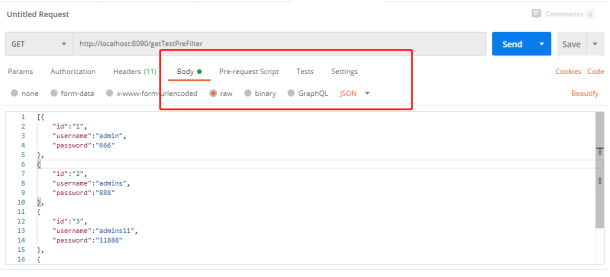链接上一篇文章:spring学习之springSecurity(四)
1、注解使用
@Secured
判断是否具有角色,另外需要注意的是这里匹配的字符串需要添加前缀“ROLE_“。
使用注解先要开启注解功能!
@EnableGlobalMethodSecurity(securedEnabled=true)
@SpringBootApplication
@MapperScan("xyz.haijin.dao")
@EnableGlobalMethodSecurity(securedEnabled=true)
public class Securitydemo1Application {
public static void main(String[] args) {
SpringApplication.run(Securitydemo1Application.class, args);
}
}在控制器方法上添加注解
// 测试注解:
@RequestMapping("testSecured")
@ResponseBody
@Secured({"ROLE_normal","ROLE_admin"})
public String helloUser() {
return "hello,user";
}
@Secured({"ROLE_normal","ROLE_管理员"})将上述的角色改为 @Secured({"ROLE_normal","ROLE_管理员"})即可访问
访问 http://localhost:8080/testSecured
@PreAuthorize
先开启注解功能:
@EnableGlobalMethodSecurity(prePostEnabled = true)
@PreAuthorize:注解适合进入方法前的权限验证, @PreAuthorize 可以将登录用
户的 roles/permissions 参数传到方法中。
@RequestMapping("/preAuthorize")
@ResponseBody
//@PreAuthorize("hasRole('ROLE_管理员')")
@PreAuthorize("hasAnyAuthority('menu:system')")
public String preAuthorize(){
System.out.println("preAuthorize");
return "preAuthorize";
}使用李四登录测试:
@PostAuthorize
先开启注解功能:
@EnableGlobalMethodSecurity(prePostEnabled = true)
@PostAuthorize 注解使用并不多,在方法执行后再进行权限验证,适合验证带有返回值
的权限.
@RequestMapping("/testPostAuthorize")
@ResponseBody
@PostAuthorize("hasAnyAuthority('menu:system')")
public String postAuthorize(){
System.out.println("test--PostAuthorize");
return "PostAuthorize";
}@PreFilter
@PreFilter: 进入控制器之前对数据进行过滤
@RequestMapping("getTestPreFilter")
@PreAuthorize("hasRole('ROLE_管理员')")
@PreFilter(value = "filterObject.id%2==0")
@ResponseBody
public List<UserInfo> getTestPreFilter(@RequestBody List<UserInfo>
list){
list.forEach(t-> {
System.out.println(t.getId()+"\t"+t.getUsername());
});
return list;
}
先登录,然后使用 postman 进行测试


测试的 Json 数据:
[
{
"id": "1",
"username": "admin",
"password": "666"
},
{
"id": "2",
"username": "admins",
"password": "888"
},
{
"id": "3",
"username": "admins11",
"password": "11888"
},
{
"id": "4",
"username": "admins22",
"password": "22888"
}]权限表达式